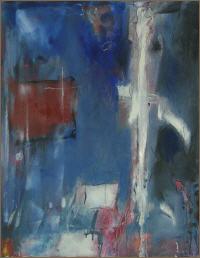Every painting by a child up to the age of four or five is a masterpiece. There has been some very impressive work done by chimpanzees and gorillas (one of the most powerful paintings I’ve seen was a banana abstraction by a gorilla). Art critics have also been fooled into giving serious reviews of exhibitions which turned out to have been done by monkeys. Everyone knows someone who has said of an abstract painting “ my three year old could have done that!”. Interestingly enough, they are right - almost!
What apes, small children and great masters have in common is an intelligence and an ability to actualize their perceptions which is unfiltered by our rational, logical, linear thought processes. Children are unhindered because these processes have not yet developed, the apes, while these possibilities are by nature limited and great masters because, because,… ahhh! That’s where it gets interesting!
In his essays on zen buddhism and the arts, D.T. Suzuki uses the example of the japanese art of fencing to illustrate the way of all arts. A gifted, but totally inexperienced beginner picks up a sword and starts wielding it with such ease and fluidity, that one who is not schooled in this art, might think that he is a master. A true master will, however, see the difference.
This beginner decides to seriously develop his talent, and becomes a student of sword. He now learns to observe the movements of others, as well as his own. He starts to analyze that which came so naturally to him in the beginning, and soon discovers that he has ten thumbs and two left feet. He can do nothing. Due to the process of becoming conscious of himself, he has lost his original state of innocence. If he works hard for many years, he can not only master this knowledge on a rational level, but eventually he can forget it.
After he has mastered these processes and then forgotten them again, he once again is able to move free and unfettered (similar to the beginning, but different), and is truly a master. He has achieved what Suzuki calls “beginner’s mind”. The religious implications of this “loss of”, and then “regaining of” innocence are obvious. As religion and art are synonymous, the tracks of this as an artistic process (the painting) are also obvious.
When one regards the works of artists who have worked hard for a very long time and lived to a ripe age (examples: Kokoschka, Picasso), one sees their return to a state of innocence and freedom similar to that of a child. The fact, however, that their work has gone through a process of awareness and consciousness puts it on a different level.
My opinion - A true understanding of this level of consciousness might be the main reason for being born on this earth, and everyone goes through it to some degree - each in his own way. The potential to free ourselves and learn how to play again lies within everyone’s possibilities and is what is meant when we say: Everyone is an artist.
